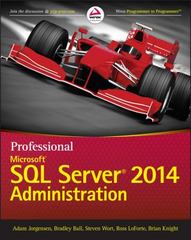Answered step by step
Verified Expert Solution
Question
1 Approved Answer
Question 2 : What am I looking at ? ( 4 0 % ) In this question, the aim is to identify an unknown object
Question : What am I looking at
In this question, the aim is to identify an "unknown" object depicted in a query image, by matching it to multiple reference images, and selecting
the highest scoring match. Since we only have one reference image per object, there is at most one correct answer. This is useful for example if
you want to automatically identify a book from a picture of its cover, or a painting or a geographic location from an unlabelled photograph of it
The steps are as follows:
Select a set of reference images and their corresponding query images.
Hint : Start with the book covers, or just a subset of them.
Hint : This question can require a lot of computation to run from start to finish, so cache intermediate results eg feature
descriptors where you can.
Choose one query image corresponding to one of your reference images. Use RANSAC to match your query image to each reference
image, and count the number of inlier matches found in each case. This will be the matching score for that image.
Identify the query object. This is the identity of the reference image with the highest match score, or "not in dataset" if the maximum score
is below a threshold.
Repeat steps for every query image and report the overall accuracy of your method that is the percentage of query images that were
correctly matched in the dataset Discussion of results should include both overall accuracy and individual failure cases.
Hint : In case of failure, what ranking did the actual match receive? If we used a "topk accuracy measure, where a match is
considered correct if it appears in the top match scores, would that change the result?
# Your code to identify query objects and measure search accuracy for data set here
Your explanation of what you have done, and your results, here Choose some extra query images of objects that do not occur in the reference dataset. Repeat step with these images added to your
query set. Accuracy is now measured by the percentage of query images correctly identified in the dataset, or correctly identified as not
occurring in the dataset. Report how accuracy is altered by including these queries, and any changes you have made to improve
performance.
# Your code to run extra queries and display results here
# Include extra query images not in dataset
Your explanation of results and any changes made here
Repeat step and for at least one other set of reference images from museumpaintings or landmarks, and compare the accuracy
obtained. Analyse both your overall result and individual image matches to diagnose where problems are occurring, and what you could
do to improve performance. Test at least one of your proposed improvements and report its effect on accuracy.
# Your code to search images and display results here
# Test with another set of reference images eg museum paintings
Your description of what you have done, and explanation of results, here
Give python implementation of the criterion above. Give text explanation at the text area in the image attached. And also give visualisation like draw matches of set of reference and query images

Step by Step Solution
There are 3 Steps involved in it
Step: 1

Get Instant Access to Expert-Tailored Solutions
See step-by-step solutions with expert insights and AI powered tools for academic success
Step: 2

Step: 3

Ace Your Homework with AI
Get the answers you need in no time with our AI-driven, step-by-step assistance
Get Started


